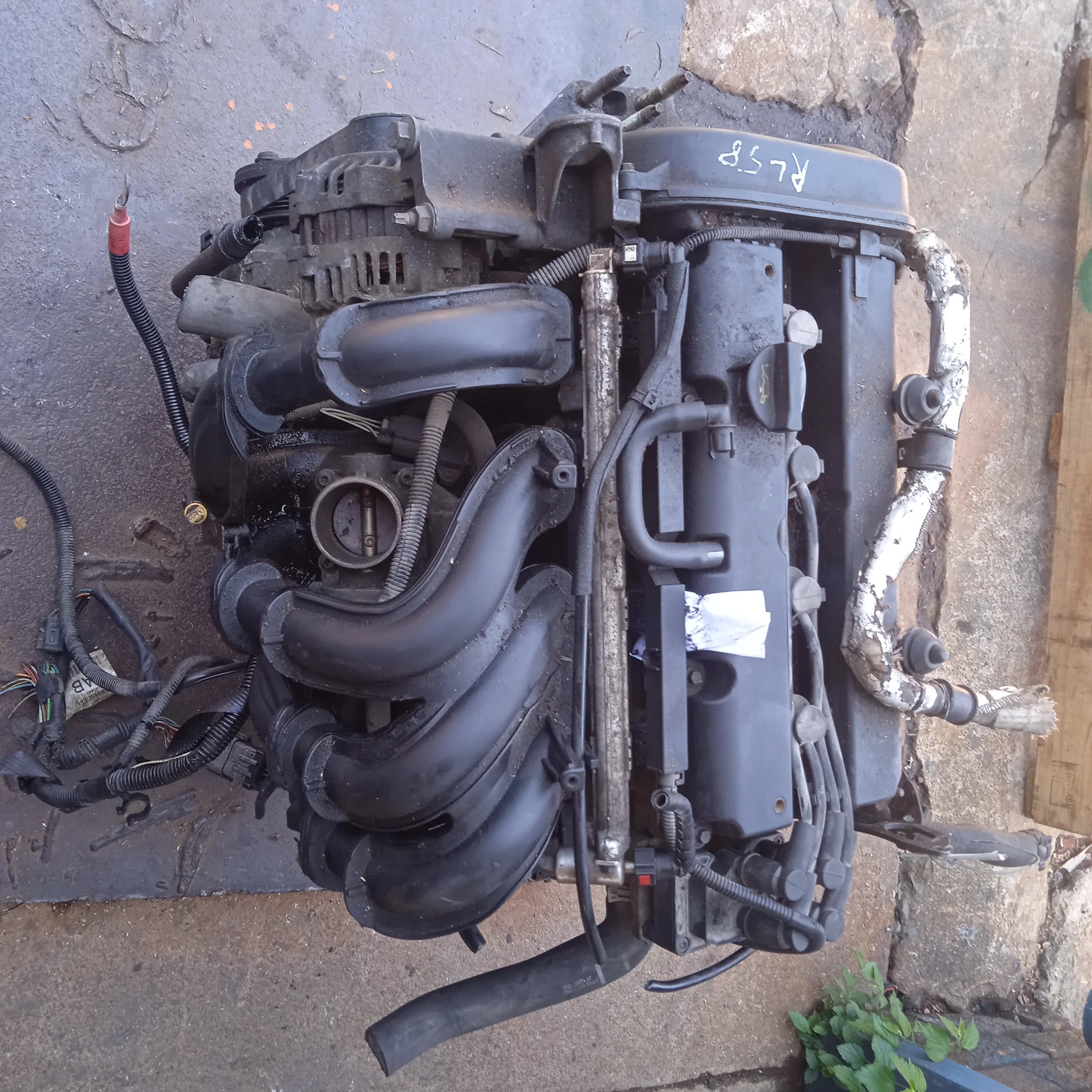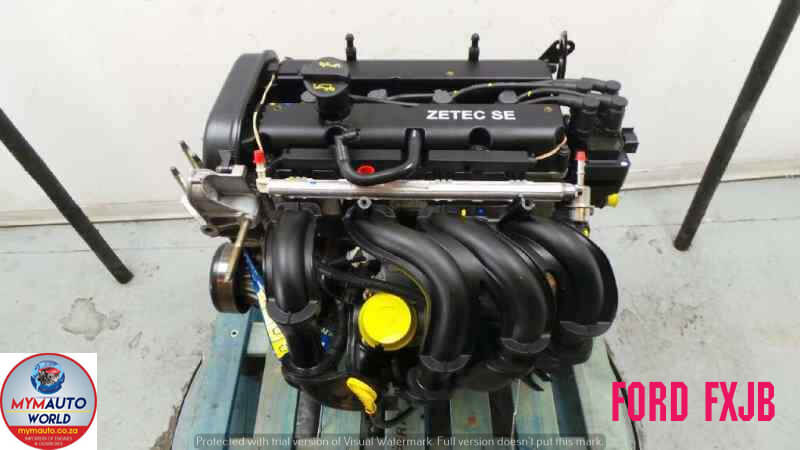Exploring the Benefits of a High-Performance Ford Fiesta Engine
Exploring the Benefits of a High-Performance Ford Fiesta Engine
Blog Article
The Future of Engines: Developments Driving Sustainable Power Solutions
As the automobile market browses the necessary shift in the direction of sustainability, the future of engines is significantly specified by groundbreaking technologies. Electric engine innovations, along with promising growths in hydrogen gas cells and biofuels, are reshaping the landscape of power options.
Electric Engine Advancement
The evolution of electrical engine developments symbolizes a crucial shift in the auto and aerospace industries, driven by the urgent need for lasting alternatives to nonrenewable fuel sources. This transition is characterized by substantial improvements in battery technology, power electronics, and electrical motor style, which jointly boost the efficiency and performance of electrical engines.
Recent advancements have led to the production of lighter, more energy-dense batteries, such as lithium-silicon and solid-state batteries, which assure longer arrays and shorter billing times. Additionally, improvements in electric motor efficiency, such as making use of permanent magnets and progressed cooling down systems, allow electrical engines to run efficiently under differing conditions. These improvements not only improve car efficiency however additionally contribute to a decrease in overall power usage.
Moreover, the integration of sophisticated software application formulas has actually optimized energy monitoring in electrical cars, enabling regenerative stopping and anticipating billing techniques. As makers significantly welcome electrical propulsion, the aerospace and automotive fields are observing a paradigm shift towards greener innovations. This development not just satisfies regulatory demands yet likewise aligns with customer preferences for eco-friendly transport options, solidifying electric engines as a cornerstone of future sustainable flexibility.
Innovations in Biofuels
As the aerospace and vehicle markets significantly focus on sustainable energy resources, improvements in biofuels emerge as a corresponding service to electrical engines. Biofuels, stemmed from organic products such as plants, waste, and algae, offer a cutting-edge avenue for decreasing greenhouse gas exhausts and reliance on fossil fuels.
Current study has actually focused on improving the efficiency and sustainability of biofuel manufacturing. Second-generation biofuels utilize non-food feedstocks, reducing competitors with food supply and reducing environmental influence. In addition, innovations in artificial biology have actually made it possible for the design of microorganisms to generate biofuels much more efficiently, causing greater returns and reduced manufacturing costs.
Additionally, the growth of drop-in biofuels allows for smooth assimilation right into existing framework, allowing a smoother transition for industries typically depending on fossil fuels. ford fiesta engine. These fuels can be made use of in existing engines without alterations, facilitating their fostering throughout numerous markets
Investments in biofuel innovation, together with supportive plans, are necessary to drive development and scalability. As the worldwide area looks for to battle climate adjustment, biofuels use a pragmatic, immediate remedy that aligns with the overarching goal of sustainability in transport and air travel.
Hydrogen Fuel Cell Technology
A growing variety of scientists and business are discovering hydrogen gas cell innovation as a feasible choice to standard source of power in transportation and energy systems. This modern technology transforms chemical power from hydrogen into electricity with an electrochemical reaction, with water as the only by-product, making it an environmentally pleasant alternative.
The core of hydrogen fuel cells is the fuel cell pile, where hydrogen molecules are divided into protons and electrons. The circulation of electrons produces electrical power, while protons move with a membrane to integrate with oxygen from the air, forming water. This process results in high efficiency and low exhausts, positioning hydrogen fuel cells as a crucial player in the transition to sustainable energy.
Significant developments have actually been made in enhancing the resilience and performance of gas cells, together with decreasing expenses through ingenious manufacturing strategies. The advancement of hydrogen production techniques, such as electrolysis powered by sustainable power sources, improves the sustainability of the general system. As facilities for hydrogen refueling expands and manufacturing approaches end up being more reliable, hydrogen gas cell technology holds fantastic promise for decarbonizing numerous markets, consisting of sturdy transport and fixed power generation.
Hybrid Solutions and Their Effect
Crossbreed systems represent a significant evolution in lasting engine technology, combining conventional internal combustion engines with electric propulsion to optimize energy efficiency and reduce discharges (ford fiesta engine). This dual strategy permits vehicles to use both power resources, allowing greater versatility in power consumption and lowering dependence on fossil fuels

In addition to ecological benefits, crossbreed systems offer customers a feasible shift in the direction of fully electrical lorries. They relieve range stress and anxiety by incorporating the benefit of gasoline with the advantages of electrical propulsion, making them an attractive option check my reference for a wider audience.
The Duty of AI in Engine Design
Leveraging sophisticated algorithms and equipment understanding methods, the vehicle industry is significantly incorporating artificial intelligence (AI) into engine style processes. AI boosts the effectiveness and efficiency of layout by analyzing substantial datasets to recognize optimal configurations and performance criteria. This capacity permits designers to simulate numerous operating problems and predict engine actions under numerous situations, substantially decreasing the moment and cost associated with conventional prototyping approaches.
Moreover, AI assists in the advancement of innovative materials and combustion processes tailored for sustainability. By enhancing gas efficiency and minimizing emissions, AI-driven styles align with global campaigns intended at minimizing the carbon footprint of auto engines. Maker knowing algorithms can also predict maintenance needs, causing enhanced integrity and long life of engine elements.
In Addition, AI contributes in the combination of electrification modern technologies, such as hybrid systems, where it can optimize battery administration and energy healing processes. As the sector relocates in the direction of more lasting power solutions, the duty of AI in engine design ends up being progressively important, driving development and boosting the efficiency of future engines. Ultimately, the partnership between AI and engine design declares a brand-new period of smarter, cleaner, and more effective vehicle modern technologies.

Final Thought
In final thought, the future of engines is being shaped by a convergence of cutting-edge modern technologies that focus on sustainability. Electric engine improvements, biofuel growths, hydrogen gas cells, and hybrid systems jointly add to a considerable decrease in exhausts and environmental influence.
Electric engine advancements, along with appealing advancements in hydrogen fuel cells and biofuels, are improving the landscape of power options. Additionally, improvements in electrical motor effectiveness, such as the use of permanent magnets and progressed cooling down systems, make dig this it possible for electrical engines to run successfully under differing conditions. By enhancing fuel performance and lessening emissions, AI-driven designs align with international campaigns aimed at minimizing the carbon footprint of auto engines. As the sector relocates towards more sustainable power solutions, the function of AI look these up in engine design comes to be significantly essential, driving development and improving the efficiency of future engines. Electric engine developments, biofuel developments, hydrogen gas cells, and crossbreed systems collectively add to a considerable reduction in discharges and ecological influence.
Report this page